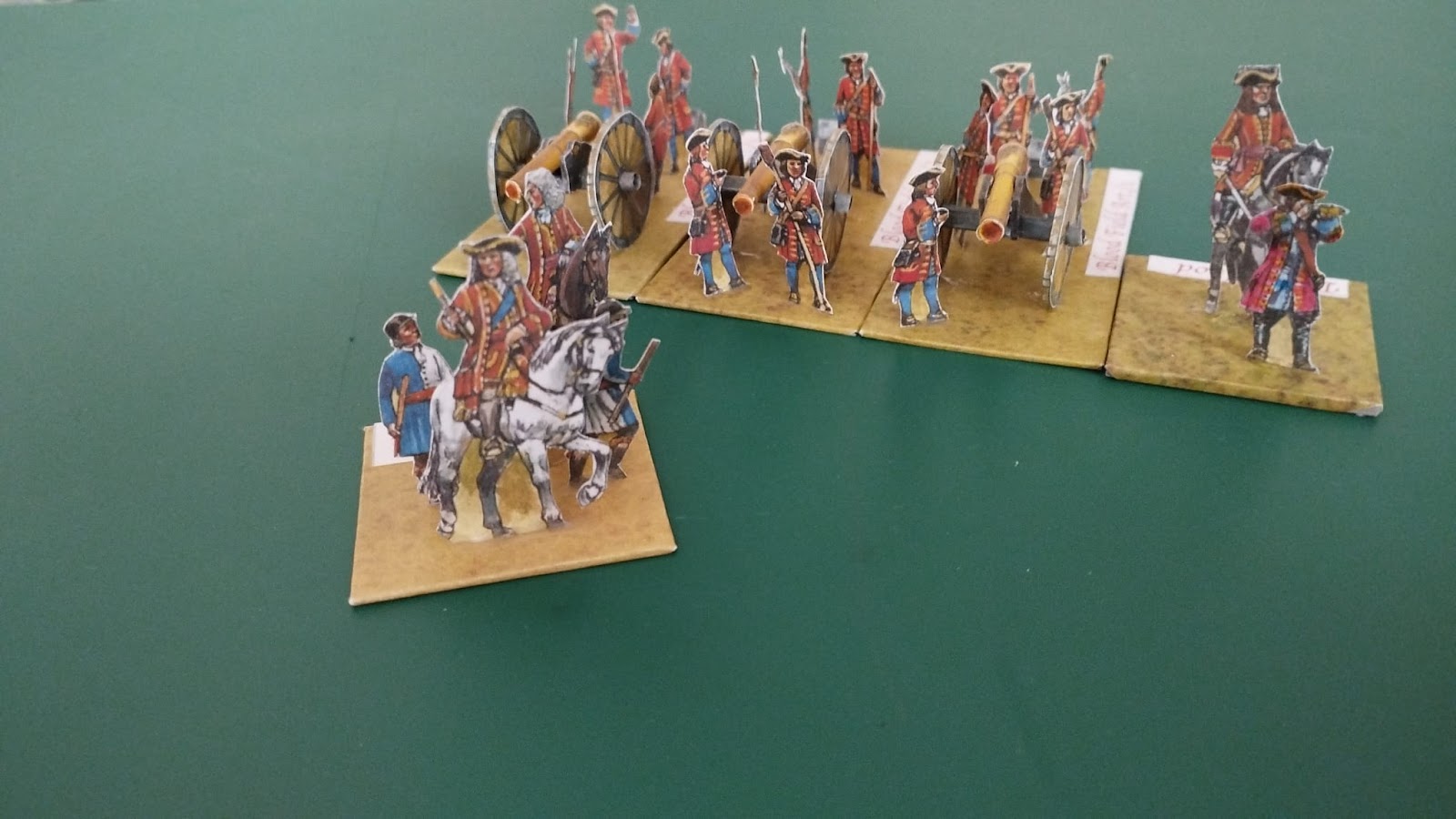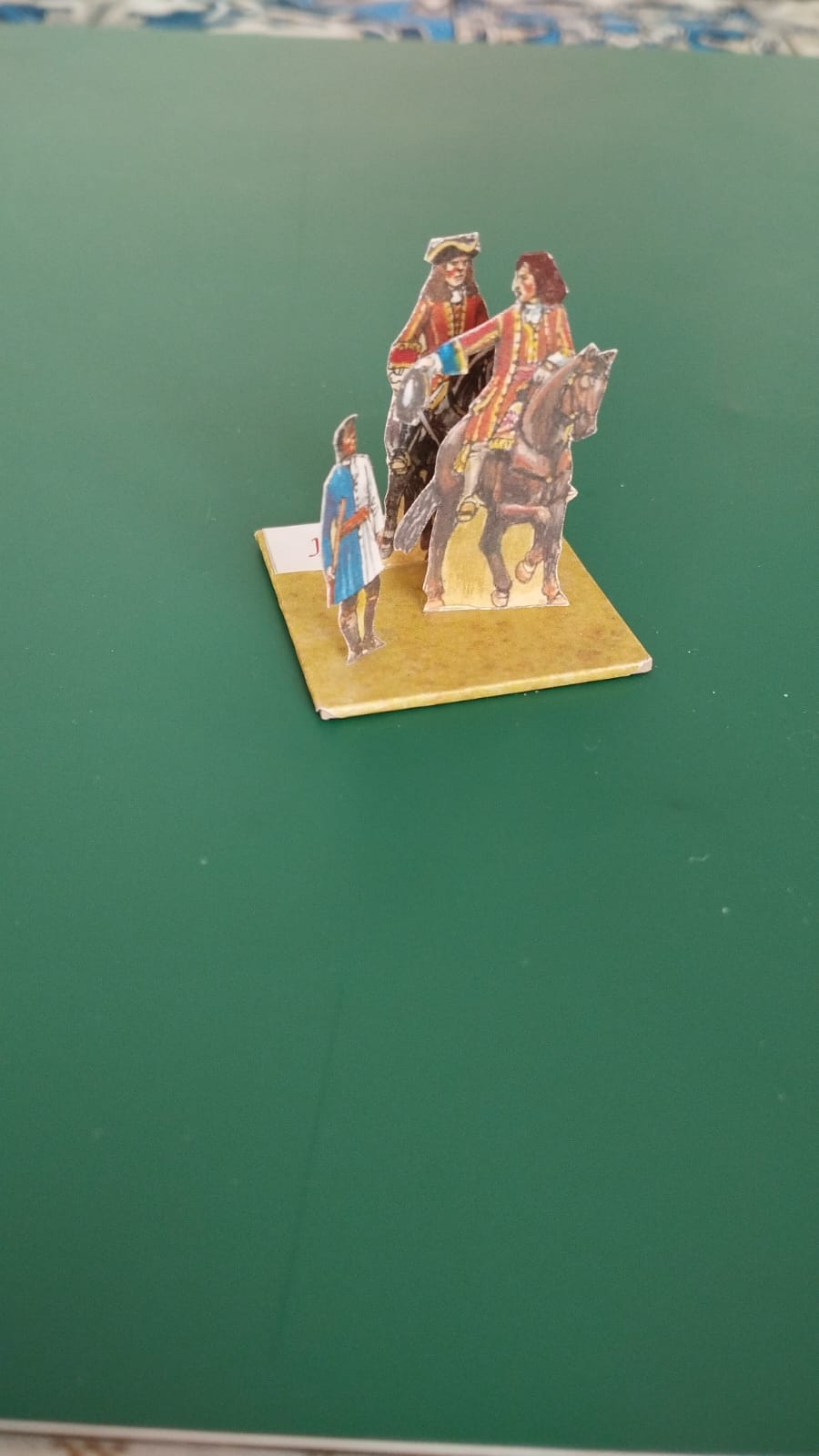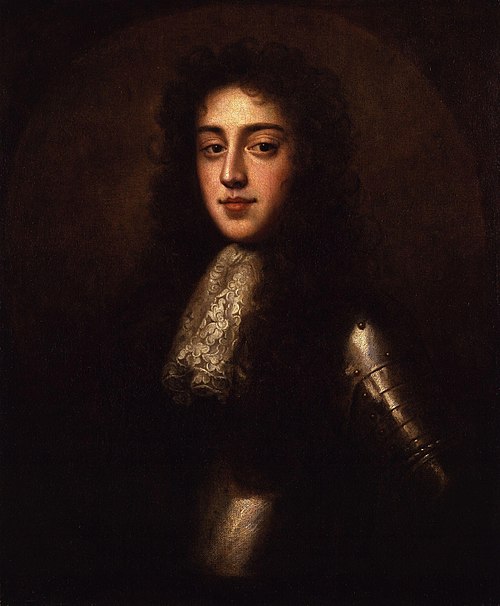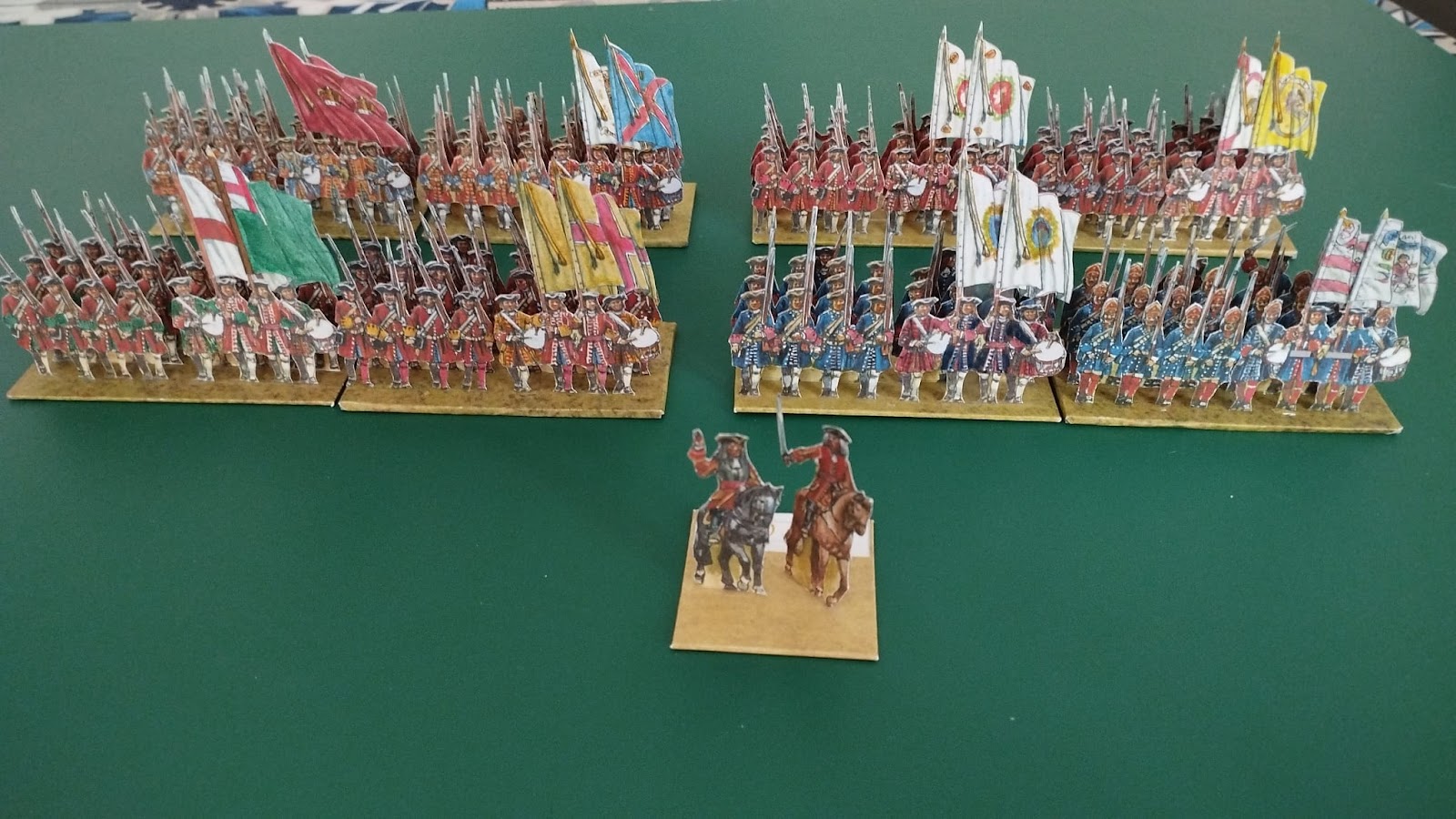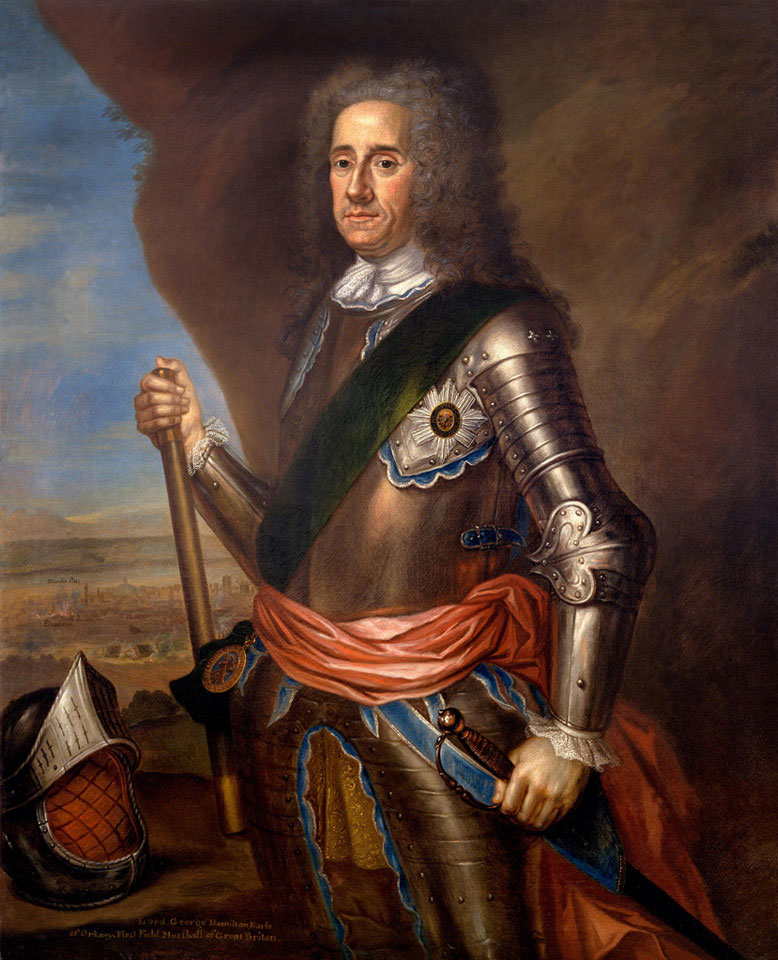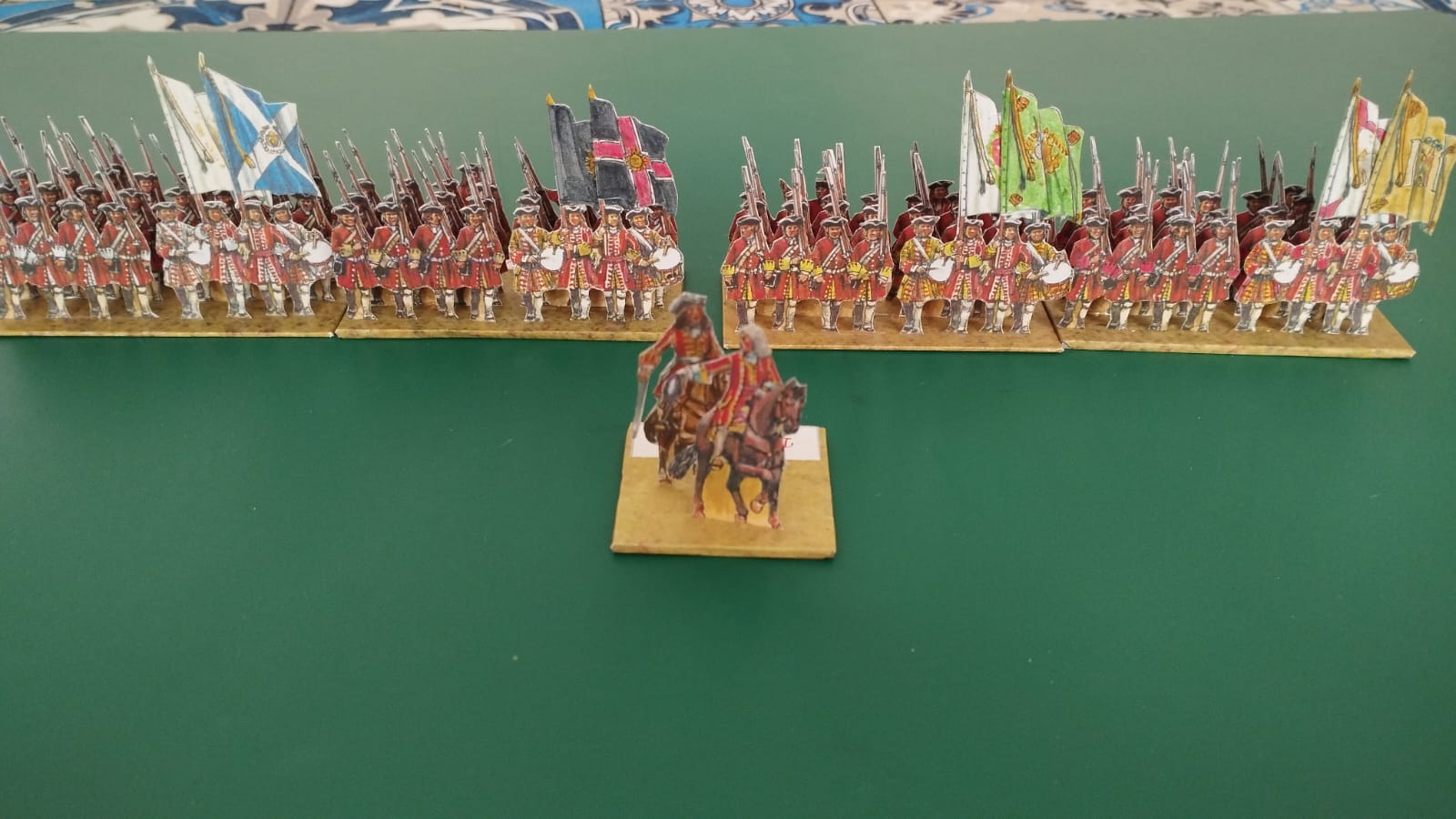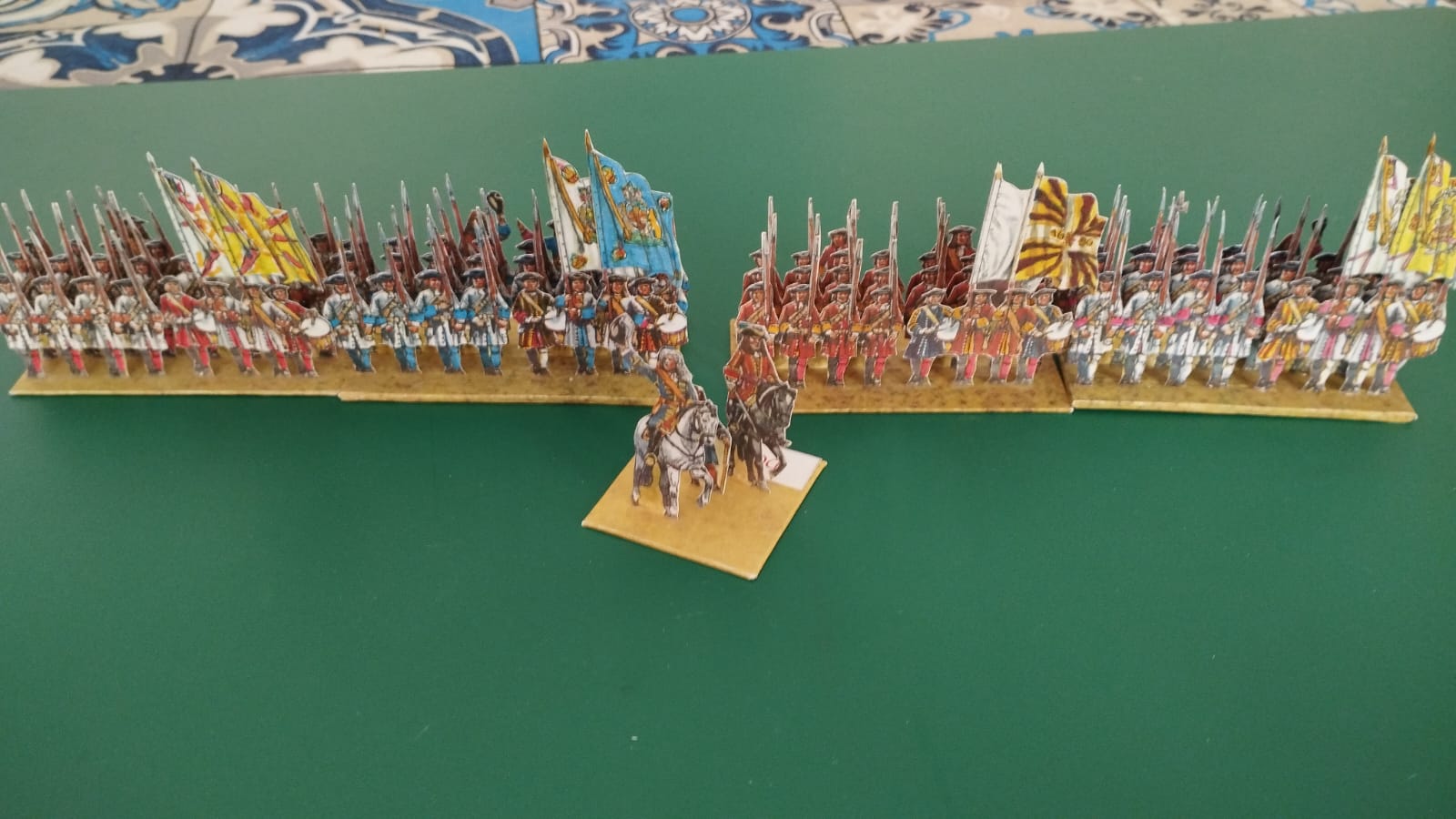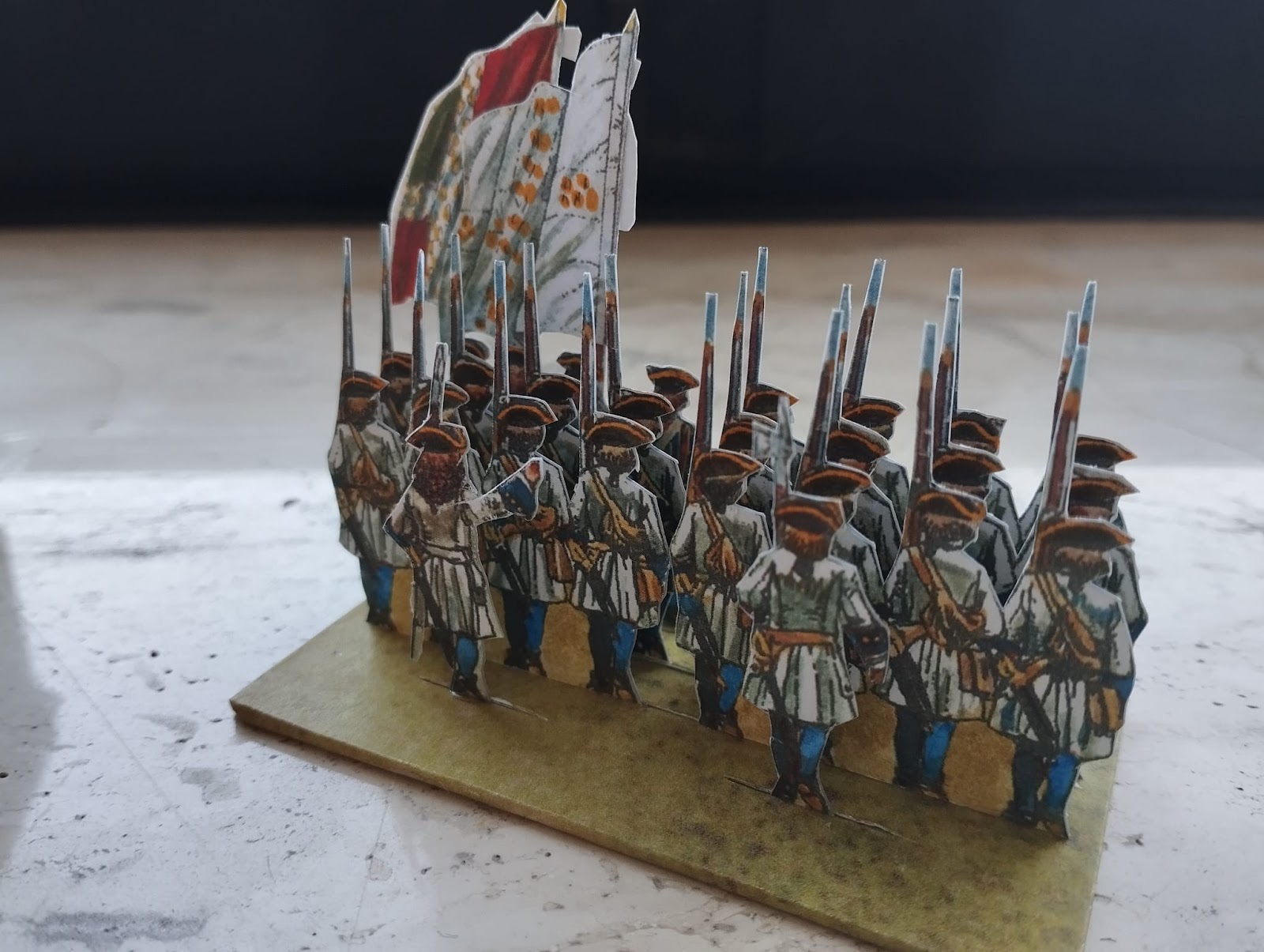The Army commander, the Captain General John Churchill, 1st Duke of Marlborough:
Here the Duke himself (based with his Quartemaster, the Earl of Cadogan and two runners) and the Colonel Blood, his Artillery commander and the three V&B English field batteries:
The Infantry corps was under the orders of Charles Churchill, the Duke younger brother and second in command.
The Left Infantry Division, entrusted of the attack of Blindheim: its commander was John, Baron Cutts of Gowan, “As brave and brainless as the hilt of his sword” according to Swift. He earned the nickname “Salamander” by his indifference to the heaviest fire at the Siege of Namur in 1695.
Left to right: first line Rowe B.de (Marlborough and Lord North Regiments), Wilkes B.de (Hessian Leibgarde and Grenadier Regiments); second line Ferguson B.de (1st Foot Guards and Royal Irish Regiments), St.Paul B.de (Hanoverian Leib and Du Breille Regiments).
1st Centre Division, commanded by Lt.Gen Richard Ingoldsby, who enjoyed the personal regard of Marlborough and whose family was related nonetheless with Oliver Cromwell; it comprises the Seckendorff Brigade (left) represented by the Wurttemberg Leibgarde and Brandenburg-Ansbach regiments and d’Herleville Brigade (right Hessian Stuckrath and Hanover Hulsen regiments).
The 2nd Centre Division under the Lt.Gen George Hamilton, Earl of Orkney: shy in company, as a soldier he had a reputation for courage and tenacity.
From left to right: the Webb brigade (1st Royal and Prince of Denmark regiments) and the Rantzow brigade (Hannover St.Pol and Celle Rantzow regiments).























